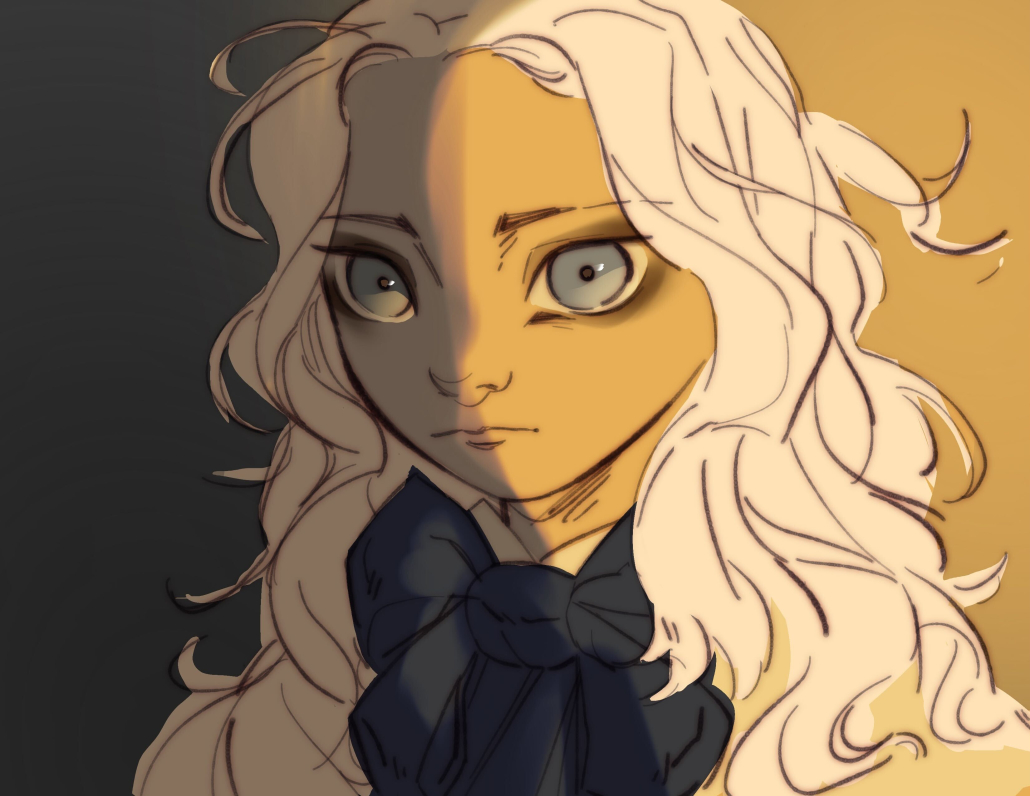Animated: “M3GAN” is friends with animation?

Hear me out: I wish I had a friend like M3GAN. Yes, M3GAN, the iconic killer robot doll from the recent hit movie “M3GAN.” She’s fun and darkly vindictive — the kind of character I aspire to be. Although I don’t necessarily approve of the methods she uses to achieve her goals, I can appreciate the protective intentions behind them. With a little moral adjustment, she could be my best friend if she wanted to be.
The whole character of M3GAN actually reminded me of “Orphan: First Kill” (2022), a film I watched recently about a serial killer going by the name of Esther (Isabelle Fuhrmann). I guess there’s something about creepy killers who assume the figures and outward appearances of young girls. To me, M3GAN is more terrifying than Esther because she represents the perfect blend of reality and animation: technology.
That relationship between what’s artificial and what’s real — and the thin line between both — is what I believe the film makes a statement about.
Watching the movie, I loved M3GAN’s power over her surrounding technology. I particularly enjoyed the control she assumed in her relationships with Cady (Violet McGraw), her primary user, and Gemma (Allison Williams), her creator. I wanted to be powerful too. There’s just something about M3GAN and what puppeteer Adrien Morot, refers to as her “unsettling” look. In an interview with Variety, Morot said the logistical behind-the-scenes operations of M3GAN involved using animation to move her lips and eyes.
That’s not all. During an interview on “Late Night with Seth Meyers,” Williams discussed how the creators made M3GAN come to life. M3GAN was a combination of real-life actress Amie Donald’s movements and an essentially controller-activated animatronic. M3GAN occupies this transitory space of not being quite a real person and not being entirely just a robot either, which is one of the ethical debates at the core of the film.
In my “History of Animation” class last semester, I learned that the very idea of animation is traditionally thought of as placing drawings together to give off the illusion of movement. Based on this, I think the character of M3GAN embodies the thought process that shaped the intent of animation and animators. First, we have the prototype of M3GAN who is this inanimate object before she’s created and brought to life.
When she is ultimately activated, she becomes a series of commands that are strung together to make her who she is. As a word, animation’s definition (according to Merriam-Webster) means “to give life to.”
In “M3GAN,” that’s what Gemma does to M3GAN. In a sort of meta way, that’s the procedure we see happening with creating M3GAN offscreen as well. She’s brought to life.
Although I’m not an animator myself and will constantly be in awe of those who are, I love that even when M3GAN does make use of computer-generated imagery, her presence is theoretically lifelike. This relates to a real-life phenomenon in animation called the “uncanny valley.”
Basically, the “uncanny valley” refers to the weird sensation one can get while viewing images that are lifelike enough to seem real, yet have that strange quality that makes them decidedly not real. (For more context, just look at films where this is notably prominent like “The Polar Express” (2004). ) It’s the effect that Morot seems to describe when he says that M3GAN is meant to give off that unsettling feeling.
Writing for the IEEE, Institute of Electrical and Electronics, Spectrum, Rina Diane Caballar explains that the “uncanny valley” principle was coined by former Tokyo Institute of Technology professor Masahiro Mori, who said that as robots’ lifelike qualities increase, people are more likely to gravitate toward those robots. Once robots reach a certain level of lifelike quality, that feeling of appeal plateaus. People begin experiencing feelings of unease.
It’s safe to say that, given the horror bent of “M3GAN,” the filmmakers’ manifestation of the “uncanny valley” was deliberate. In fact, it added to the film’s theme, that what’s artificial can be made into something more human, sometimes in dangerous ways.
M3GAN, therefore, is applicable to discussions of animation and the digital arts. At the same time that she fits into established principles and conceptual underpinnings of these technological art forms, her cinematic existence also makes a broader statement: Humanity has to be careful about attributing human qualities to technology.
M3GAN can be anyone’s friend. For everyone’s safety, though, it might be better that she stays inanimate.
Valerie Wu is a senior writing about animation and digital arts from a contemporary perspective. Her column “Animated” runs every other Thursday.

